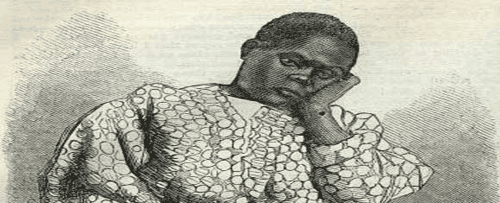Critical Approaches for Writing About Literature
Psychological Approaches
The foundation of psychological criticism is Dr. Sigmund Freud’s premise that the mind has both a conscious and unconscious realm. Psychology most often explores the unconscious mind, which uses isolation, intellectualization, repression, projection, displacement, denial, and/or reaction formations to disguise the thoughts and emotions that the conscious mind refuses to accept. For a more complete overview of the psychological approach to writing about literature, see our introduction to the psychological approach.
Introduction to the Psychological Approaches
Sample Essays:
"Two Decades of Terrible Twos: A Psychoanalytical Analysis of Beloved" by Aubrie Cox
"Psychological Criticism of Toni Morrison’s Beloved" by Shelby Larrick
Reader-Response Approaches
“Reader-Response Criticism—by bringing the personal, the individual, even the eccentric responses to our attention—can revitalize texts that we think we have already learned to read” (Lynn, 81). Reader-Response Criticism in the most literal sense is the reader’s response to a piece of literature. It is a way for every reader, and critic, to gain a deeper understanding and connection with the work he or she is reading.
Introduction to Reader-Response Approaches
Sample Essays:
"A Response to Beloved" by Giuliana Selvaggio
"Nommo Barriers: Finding Bonds in the Chaos" by Gordon Gilmore
Historical Approaches
Unlike New Criticism, Reader-Response, and Deconstruction critical perspectives, the following criticisms incorporate context in the study of literature. Contextual influence referenced can include the time it was written to the political circumstances under which it was written, influence of other cultures on the author, and culturally accepted beliefs and practices at the time.
Introduction to Historical Approaches
Sample Essay:
"Toni Morrison’s Beloved: Institutionalized Trauma, Selfhood, and Familial and Communal Structure" by Klay Baynar
Feminist Approaches
Feminism is a term used to encompass ideas and theories well beyond what many consider to be the “bra burning” ideals of the oft publicized feminists of the 1960’s and 70’s. Feminism can actually be broken down into three very distinct theories: Feminism, Post-Feminism and Queer Theory. Feminism, probably the most well known of the three often focuses on the numerous ways that women have been excluded, suppressed and exploited.
Introduction to Feminist Approaches
Sample Essay:
"When a Man Becomes a Woman (And Vice Versa)" by Kerry Dueker
New Criticsm & Deconstruction Approaches
Anyone who practices New Criticism primarily focuses on the text in order to point out its meaning and how it conveys this meaning. Attention is kept on this focus, and the author and/or the author’s intentions are disregarded, since the words themselves are what the author has put forth. The author may be mentioned in brief moments, but the text is the primary focus of the critic.
Introduction to New Criticism and Deconstruction Approaches
Sample Essays:
"Binaries in Beloved" by Patrick Steadman
"'Rememory' through
Repetition and Revision—Storytelling
and Jazz Techniques as Narrative in Toni Morrison’s Beloved" by
Allison Lingren
Who is Beloved? by Joel Booster
|
